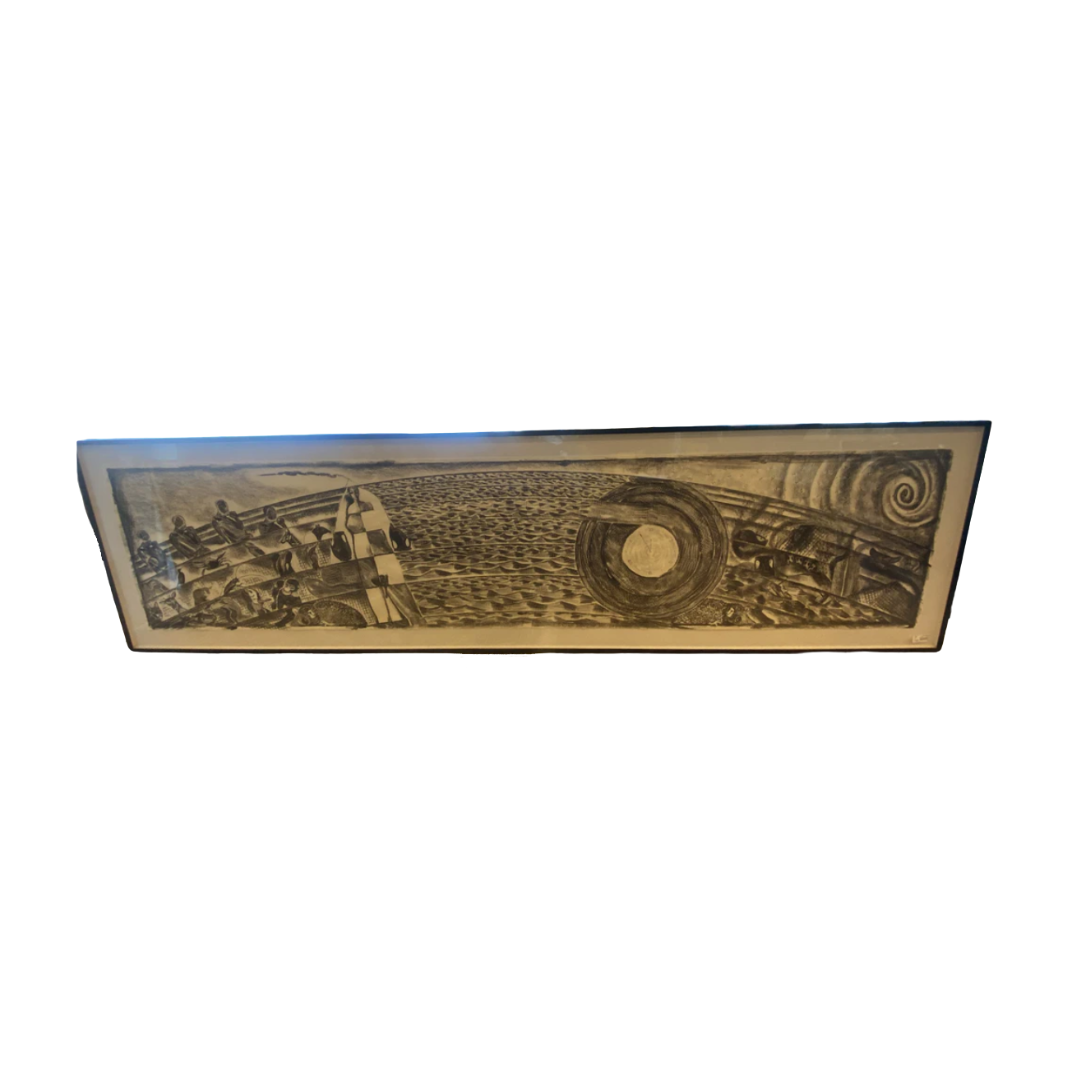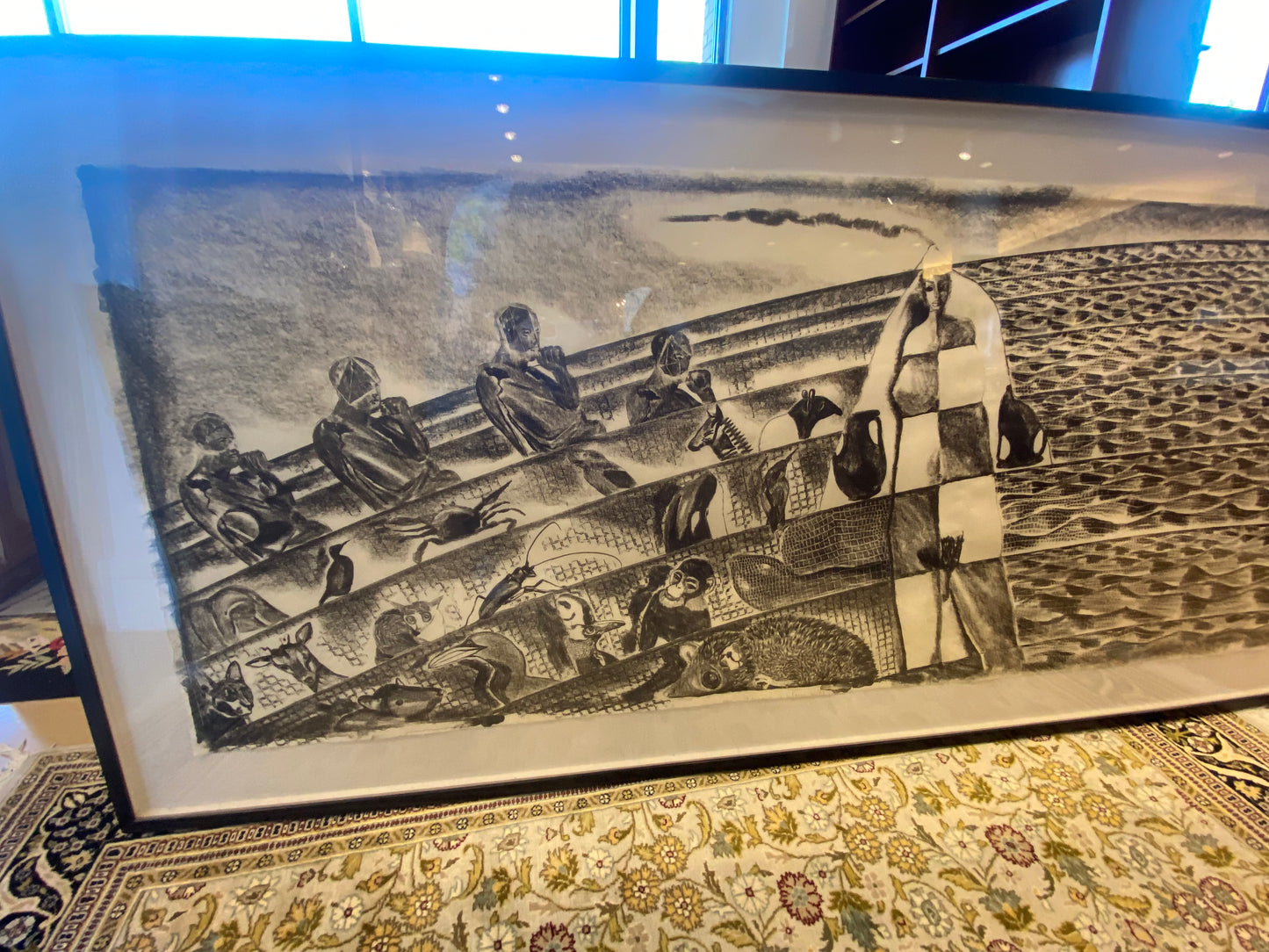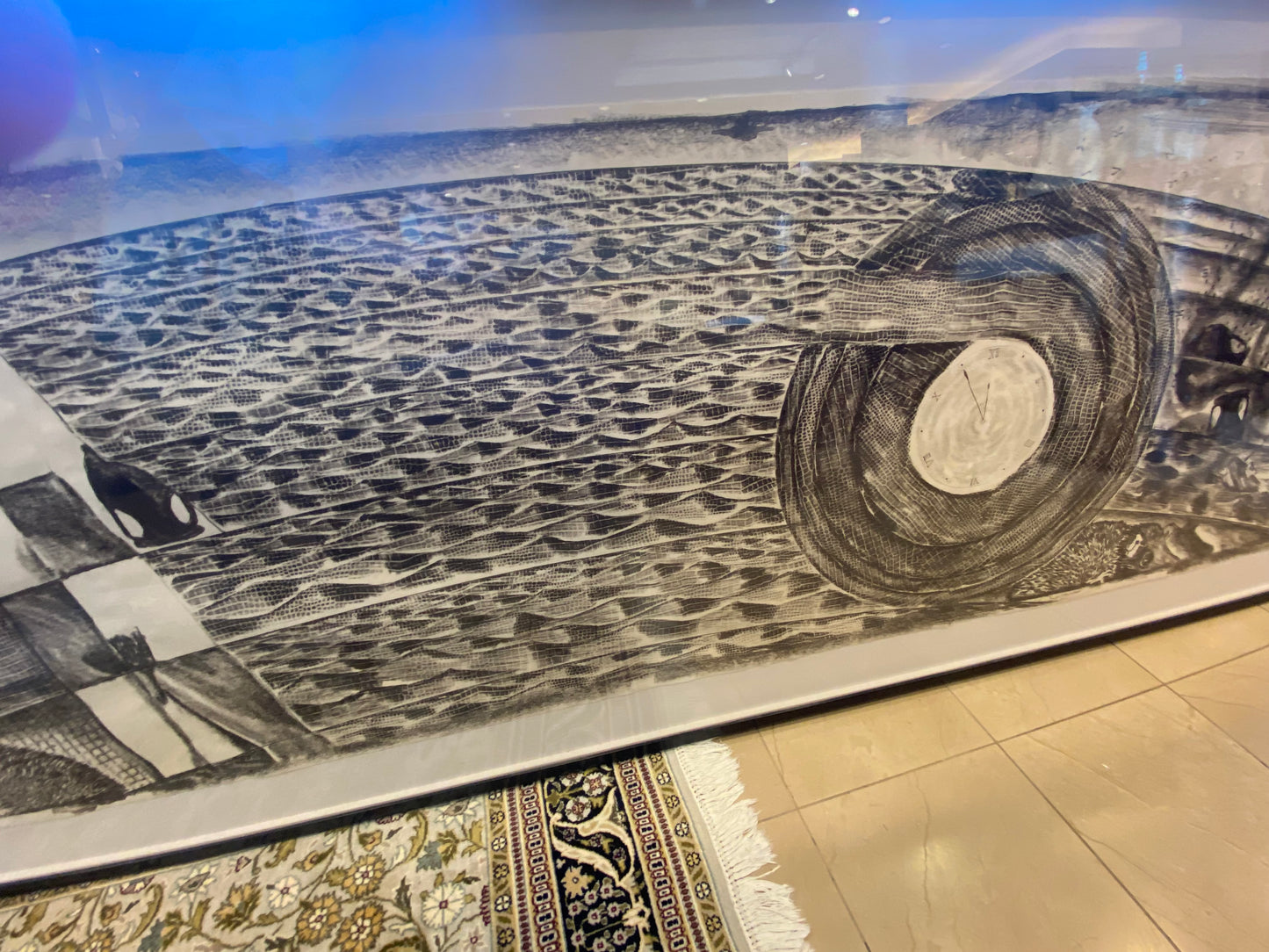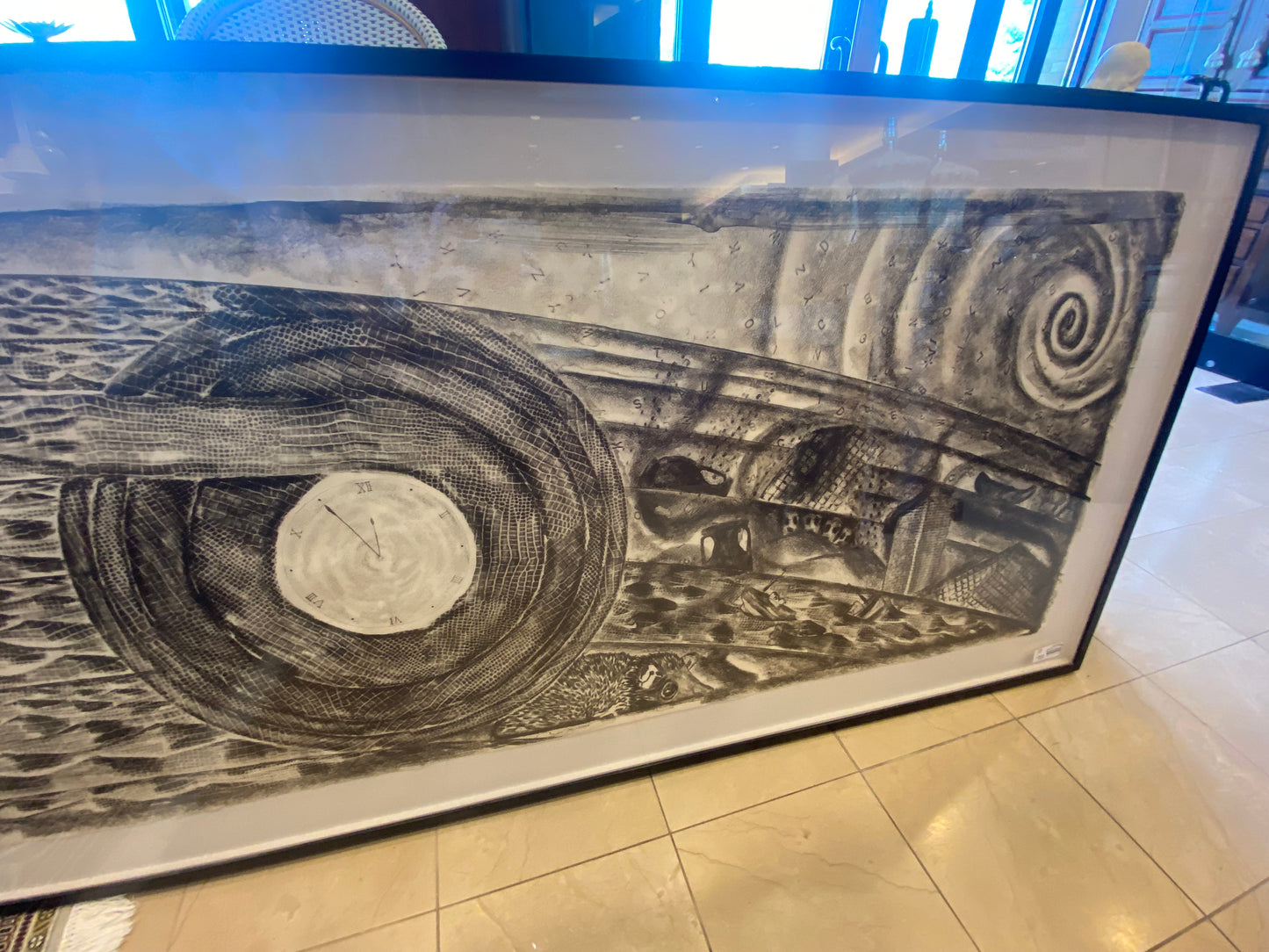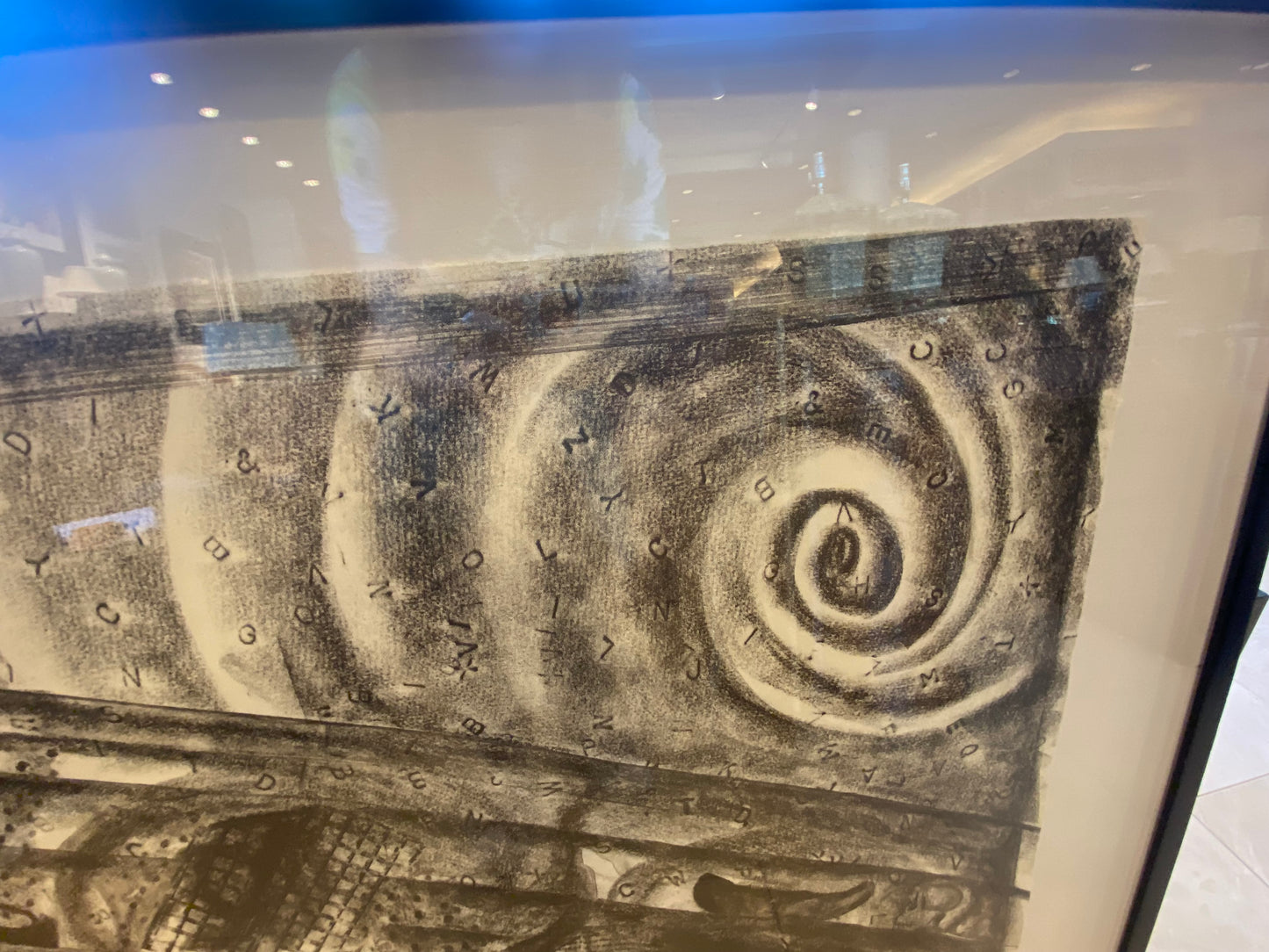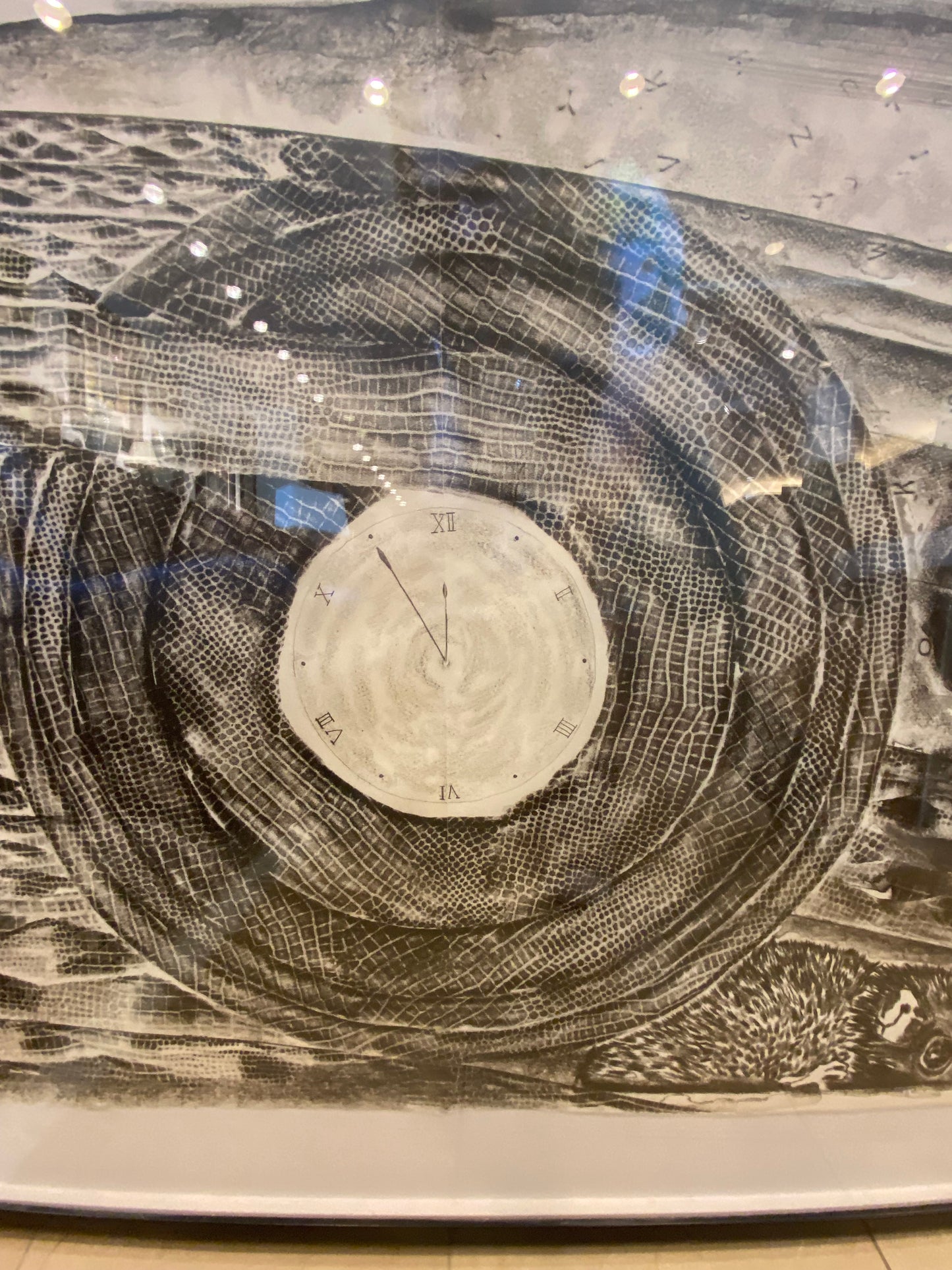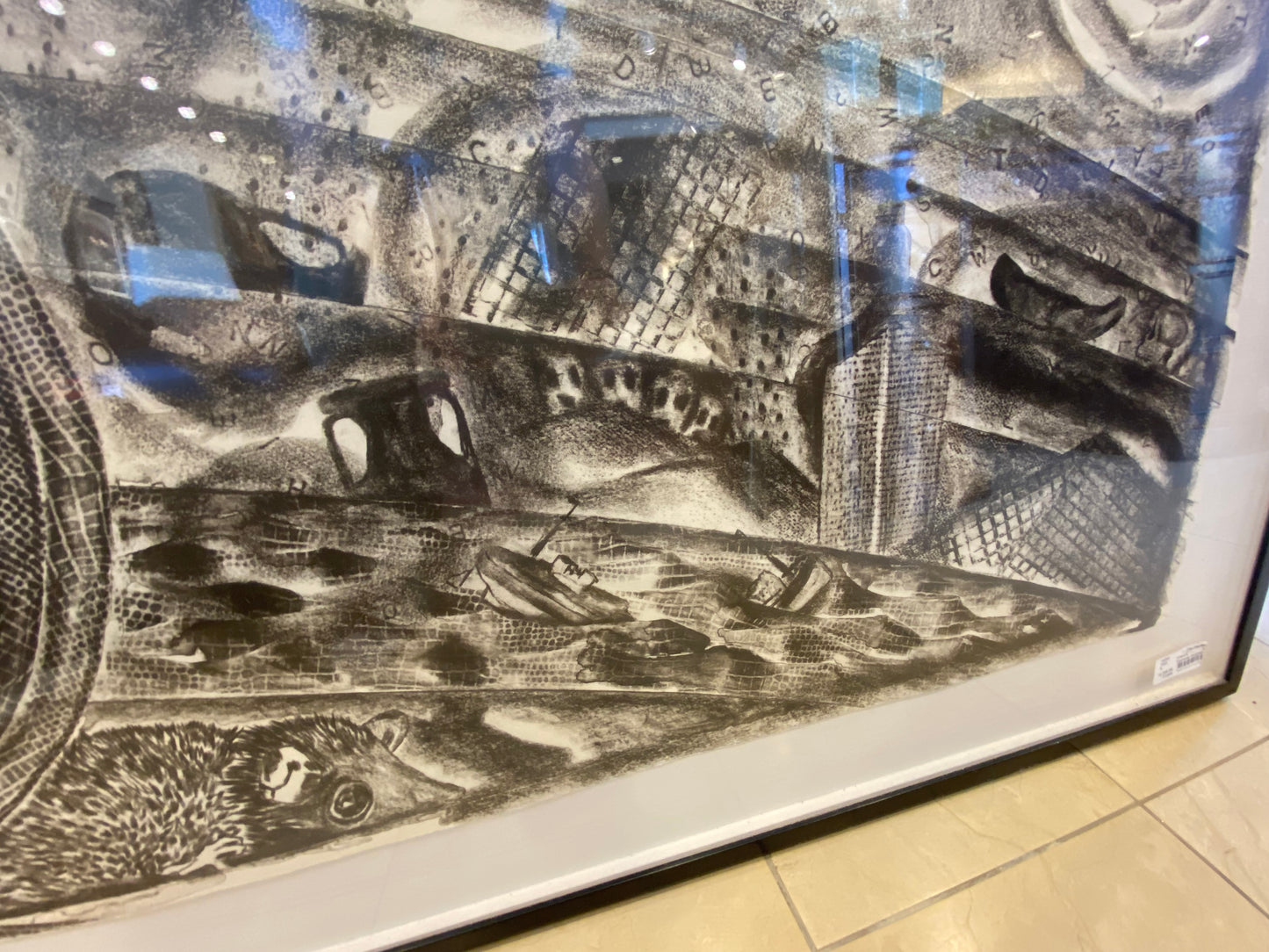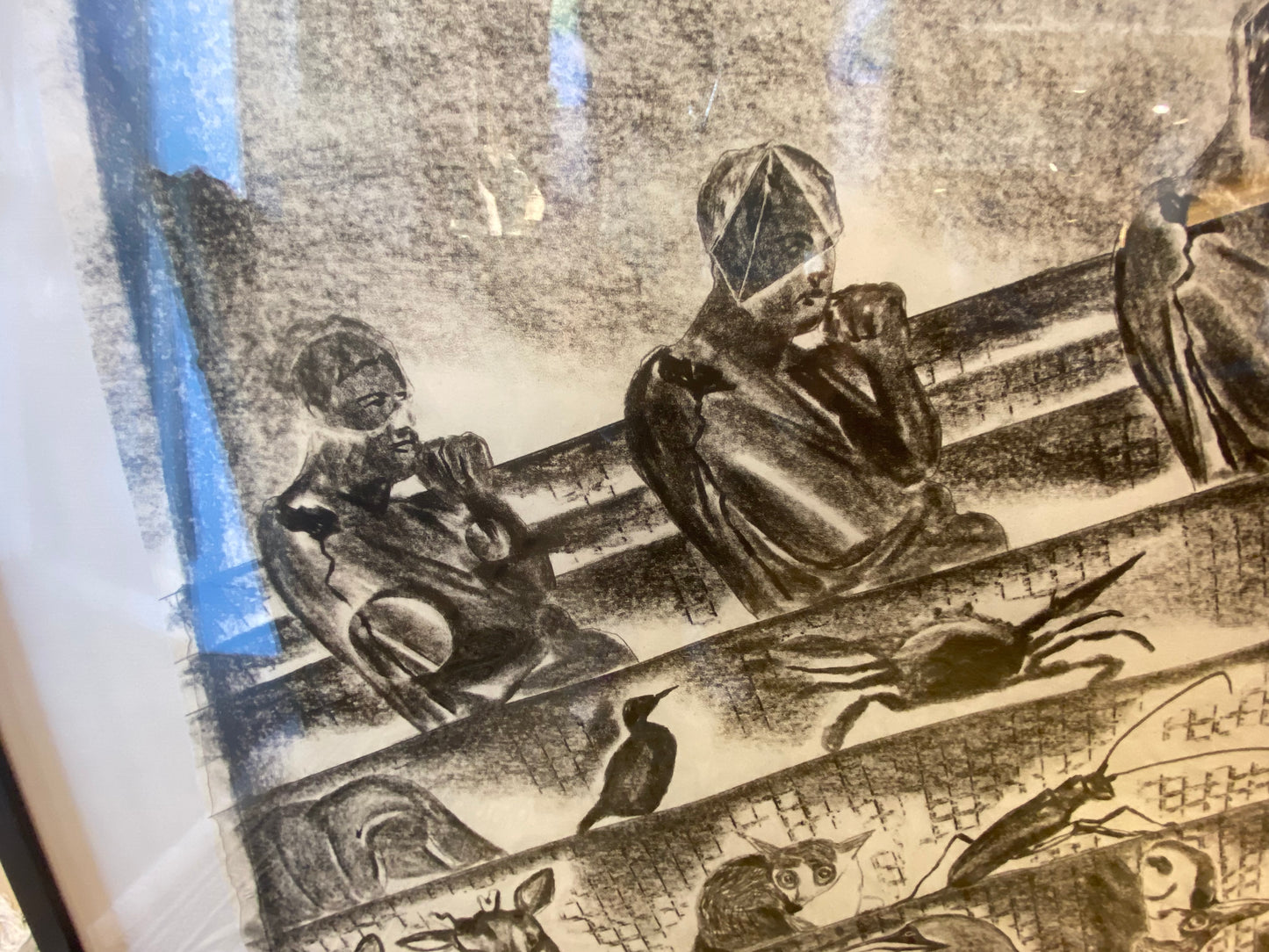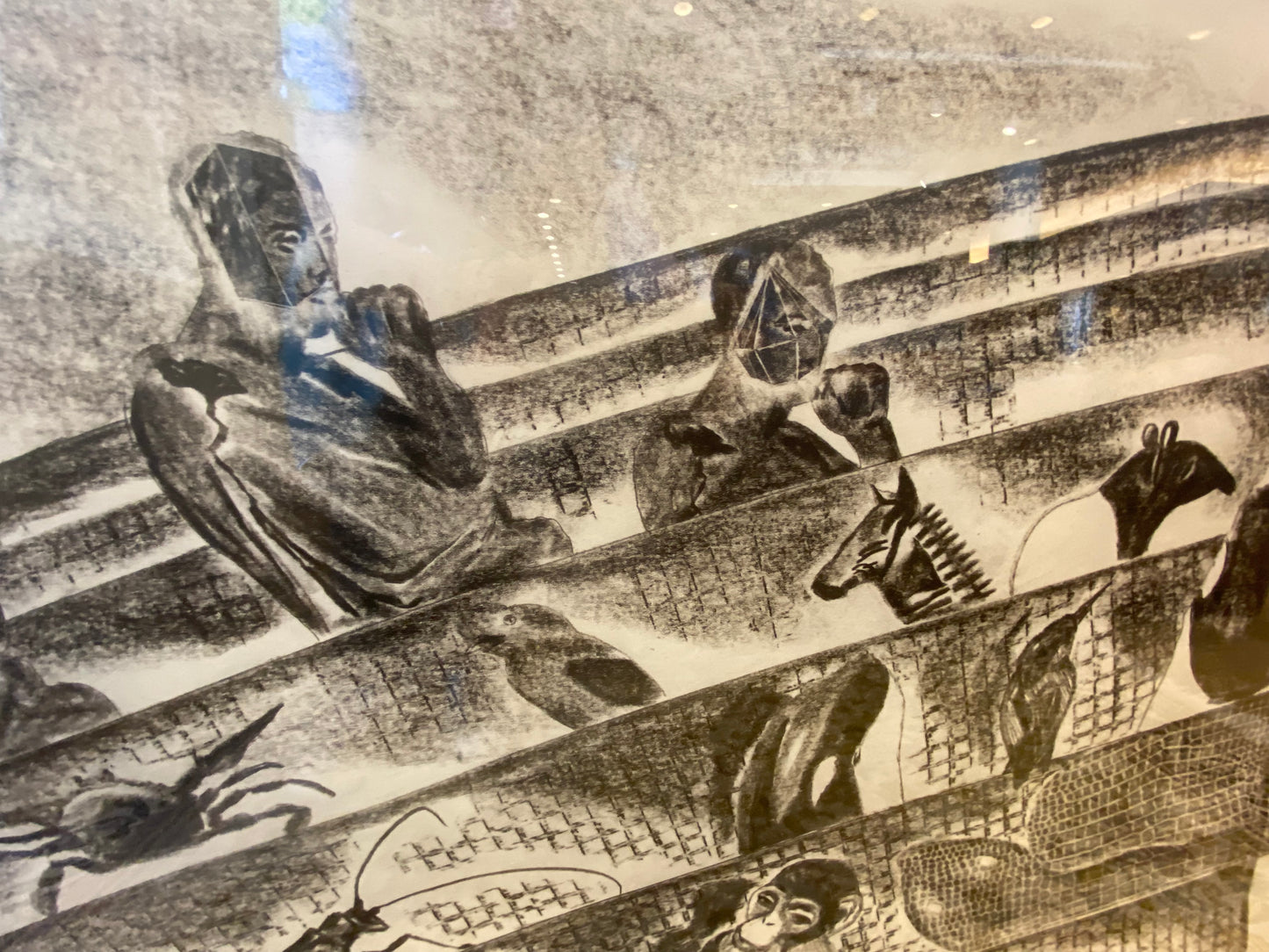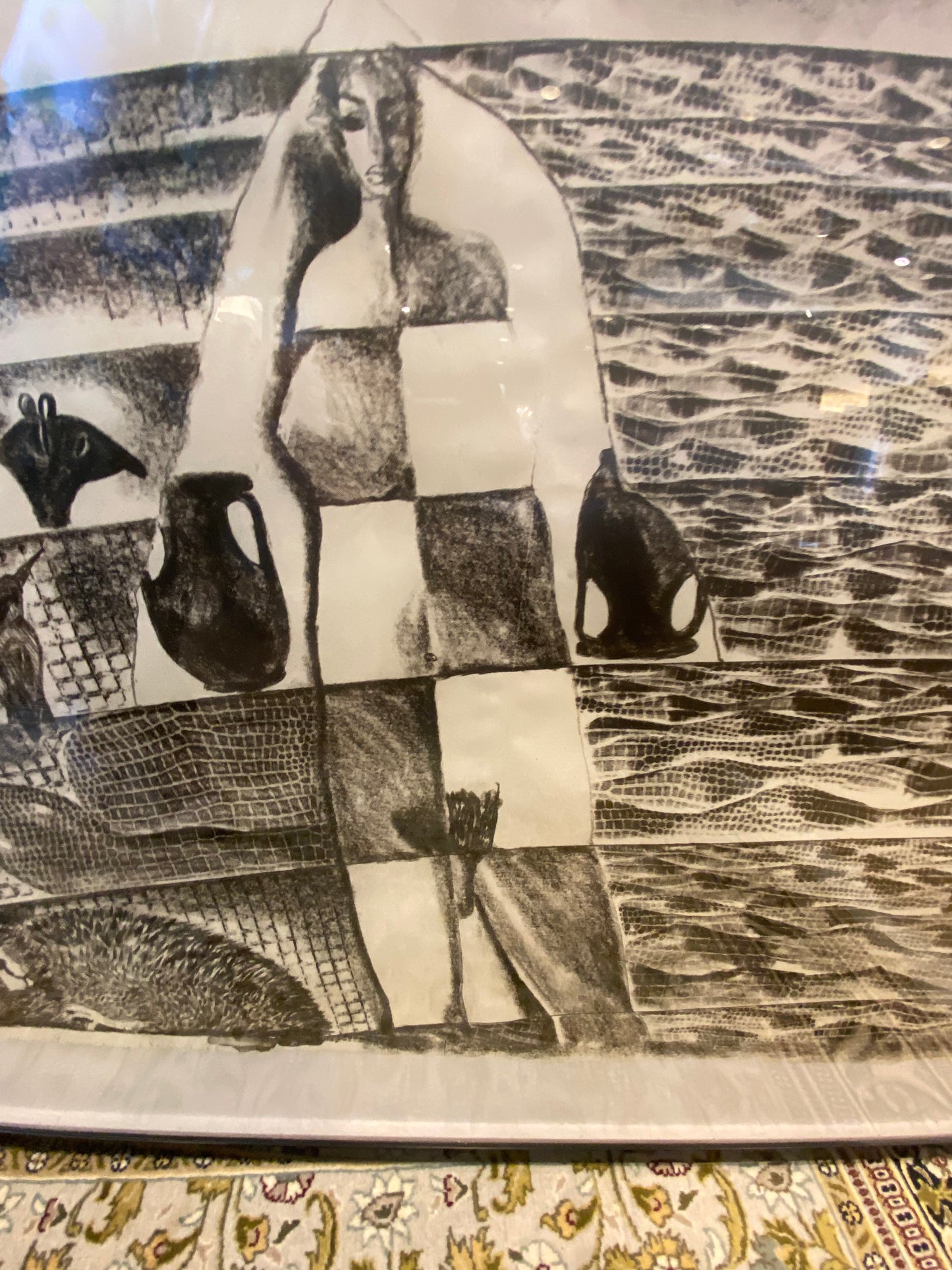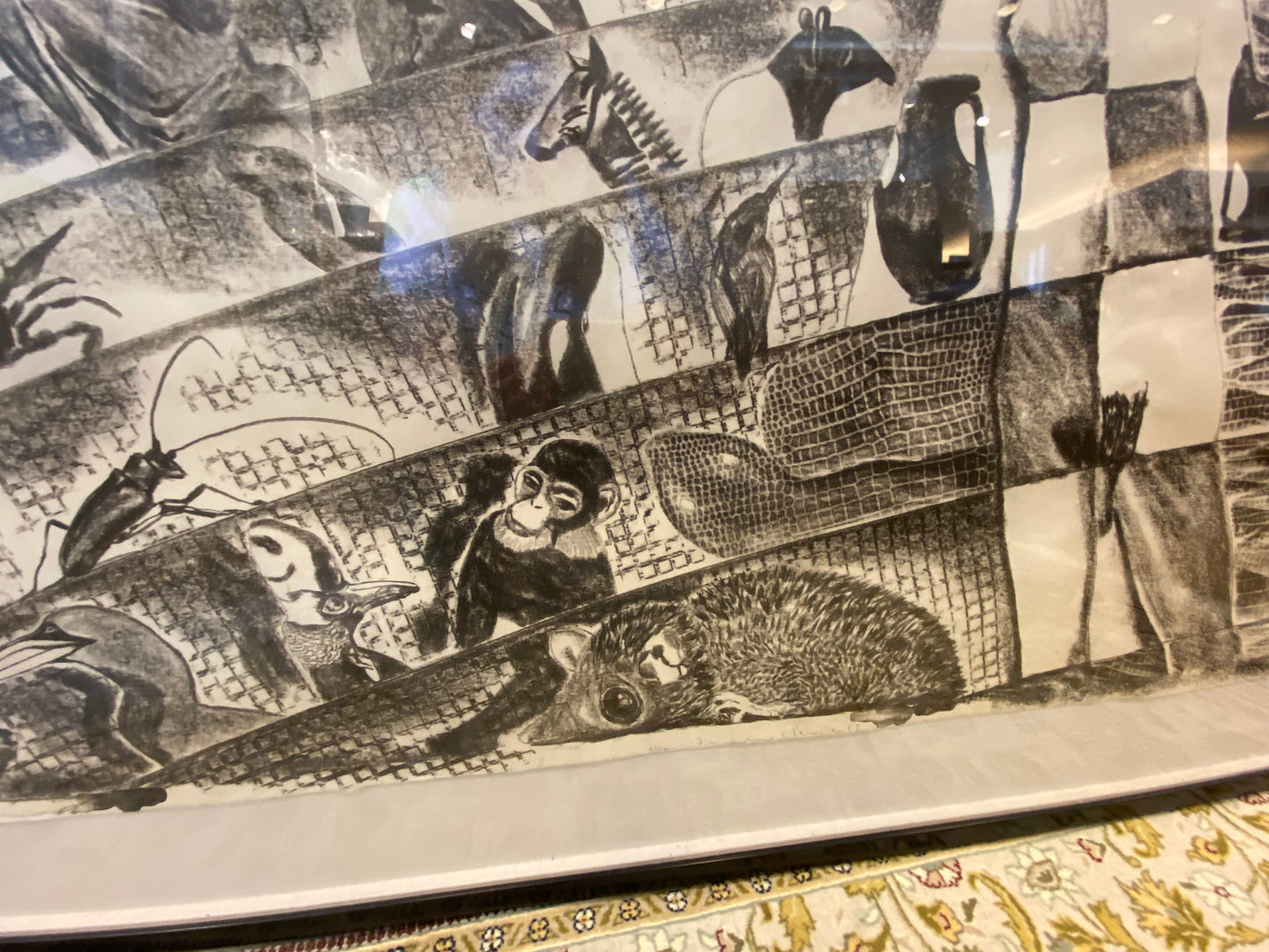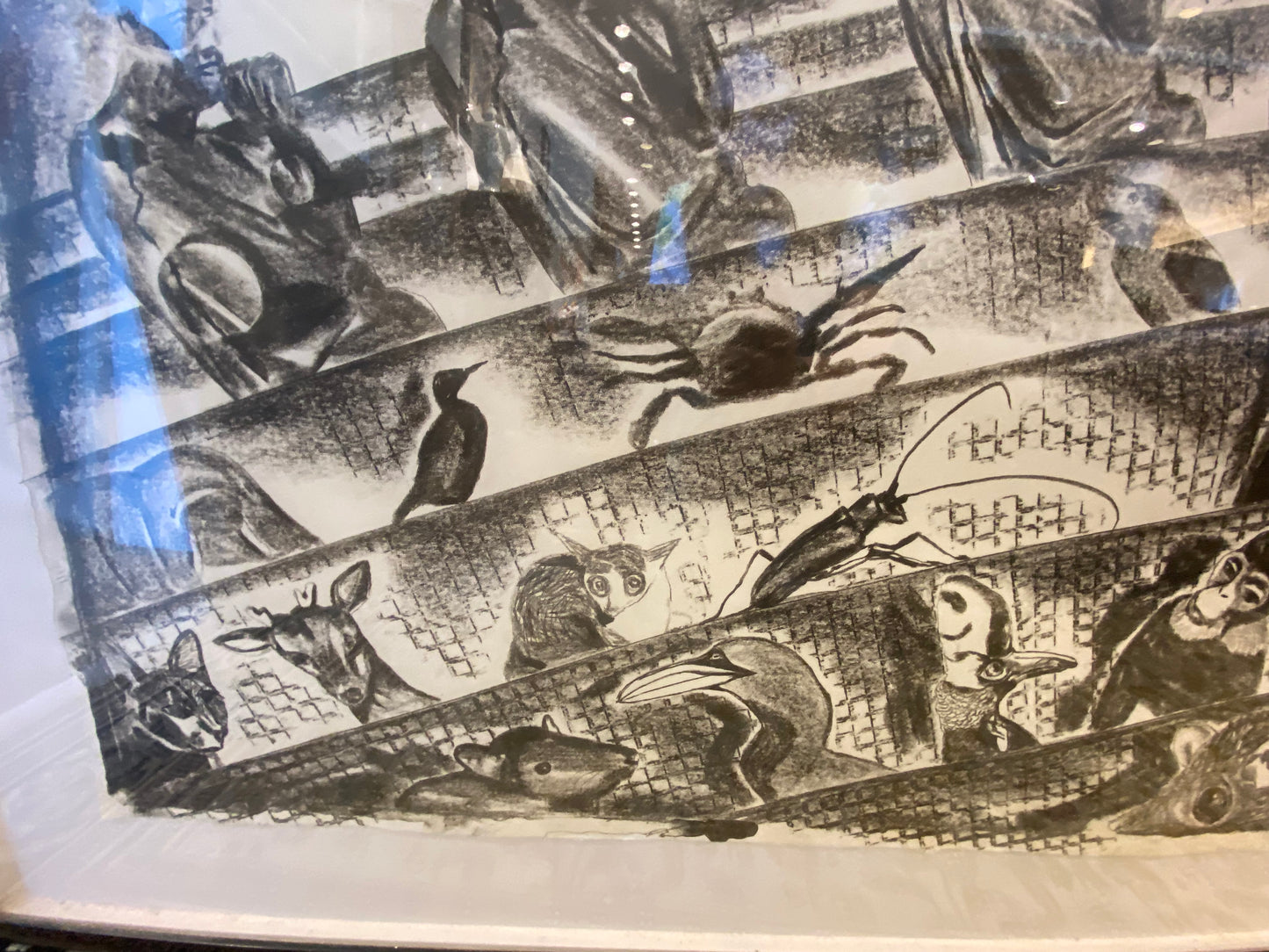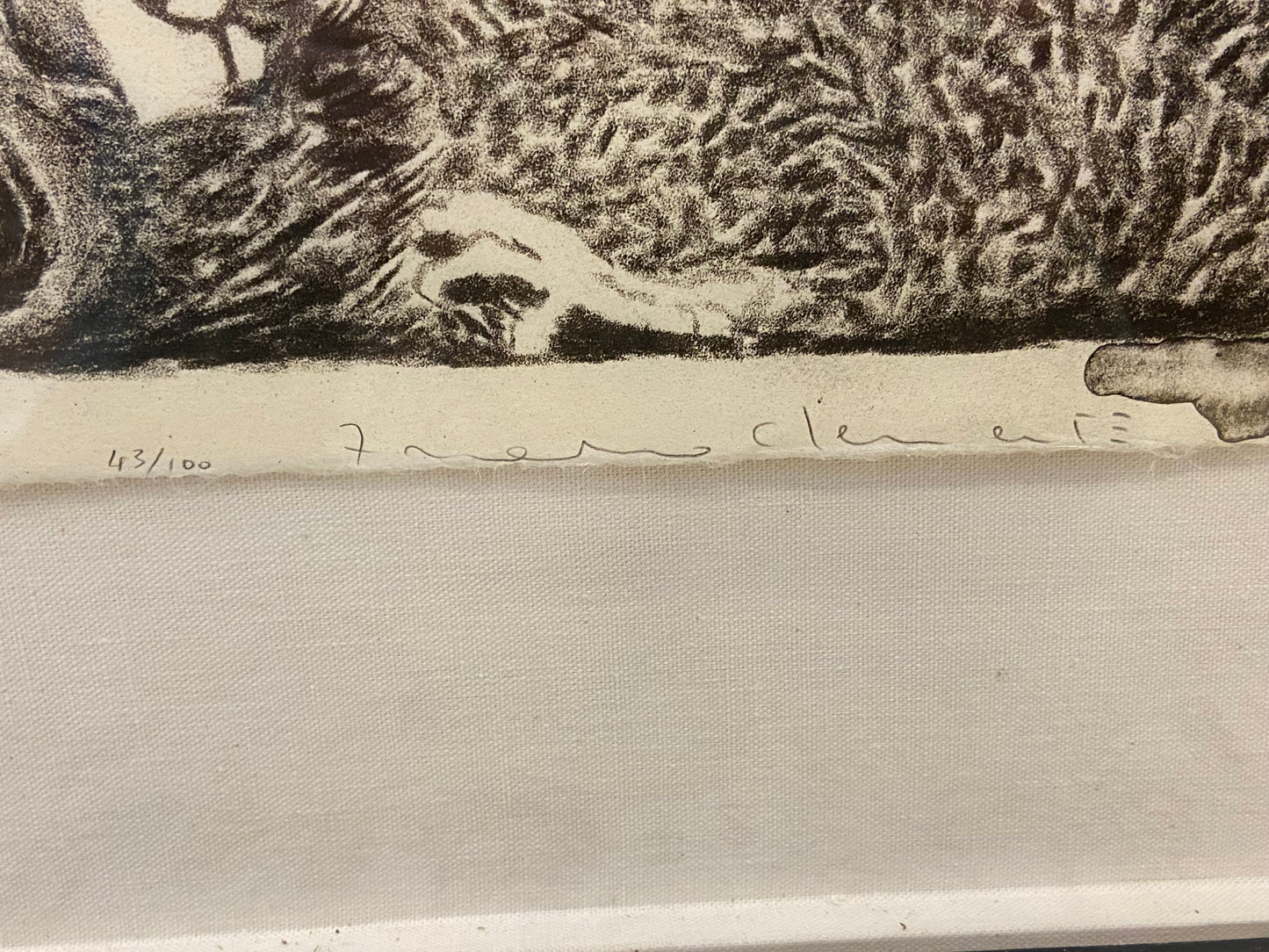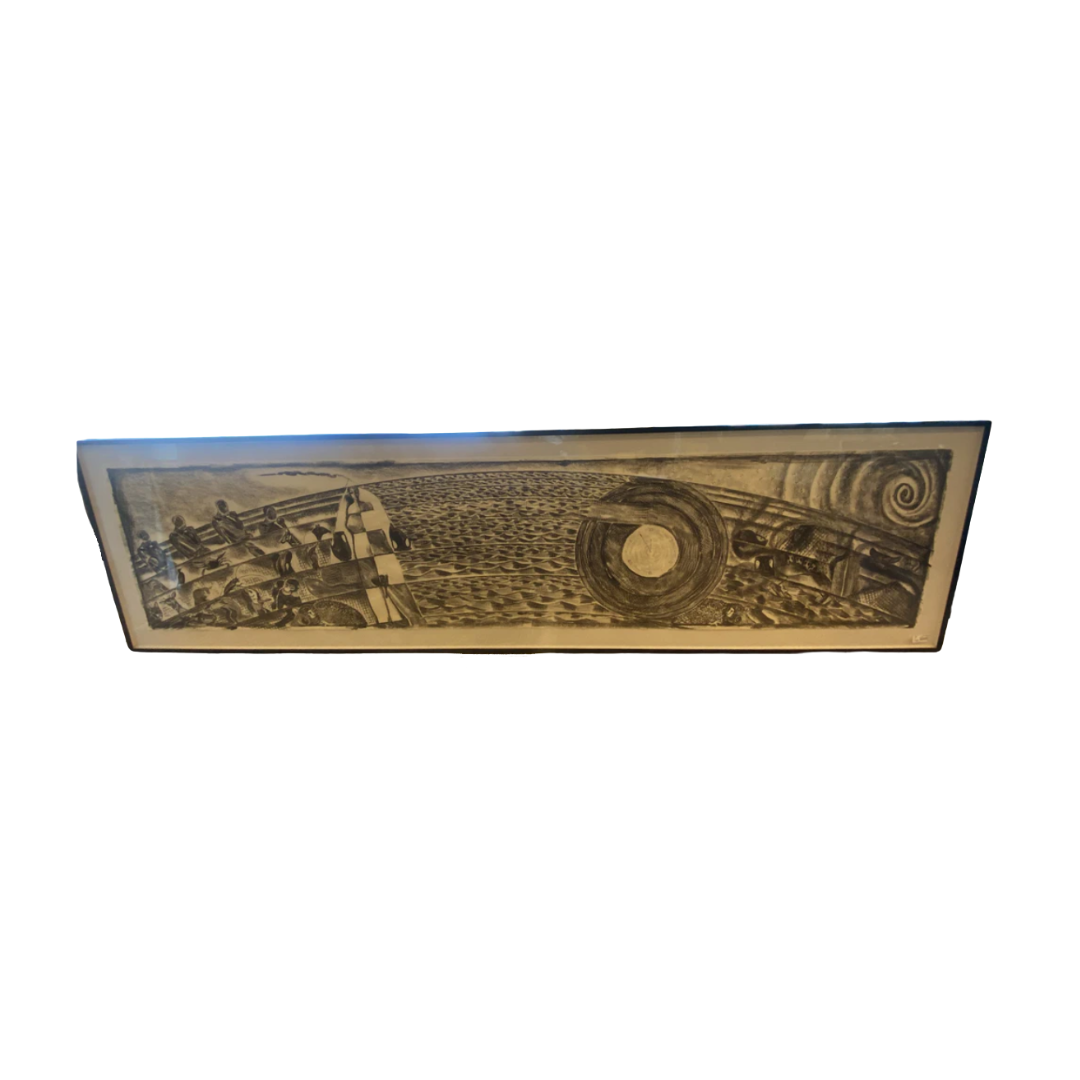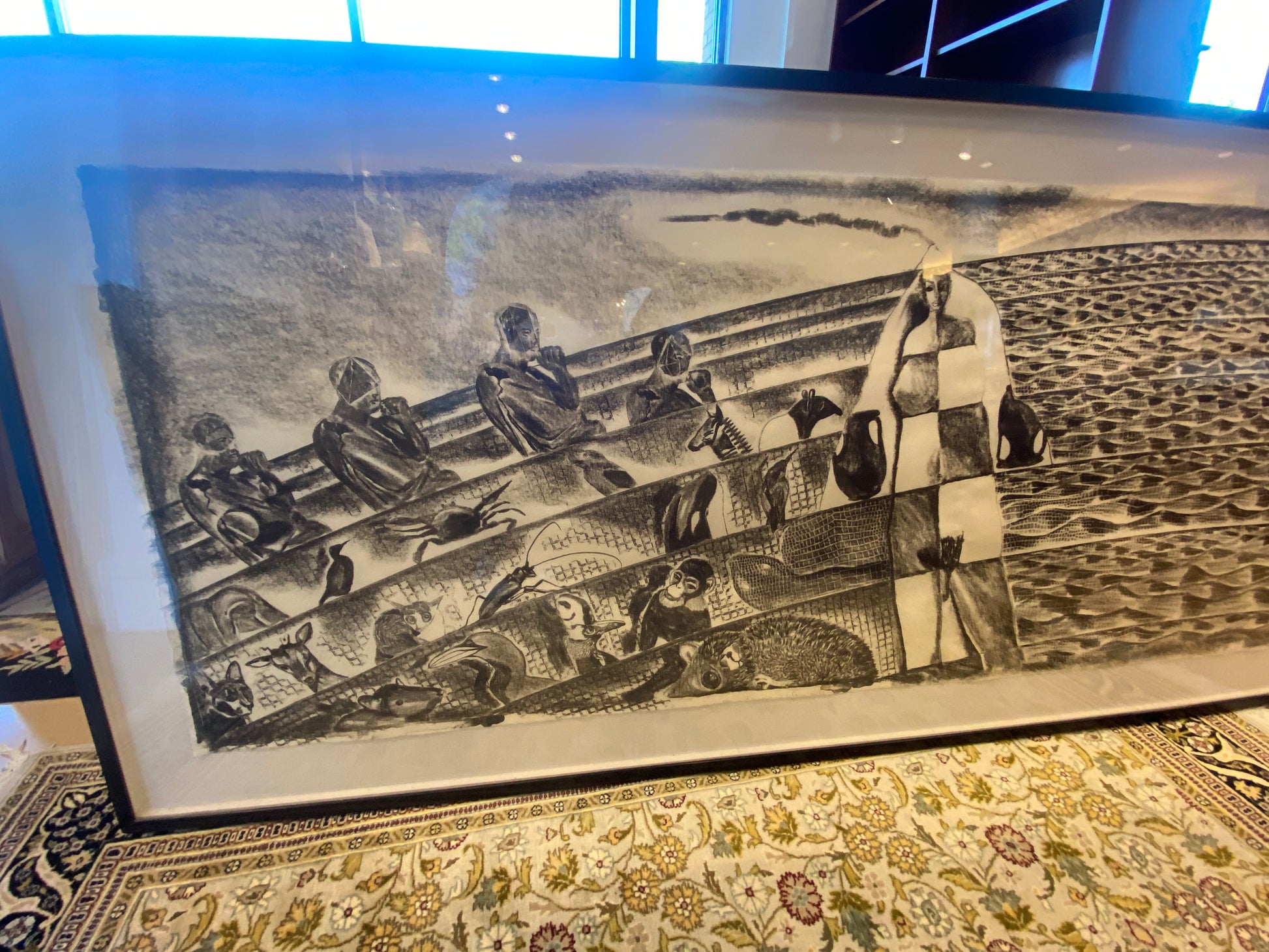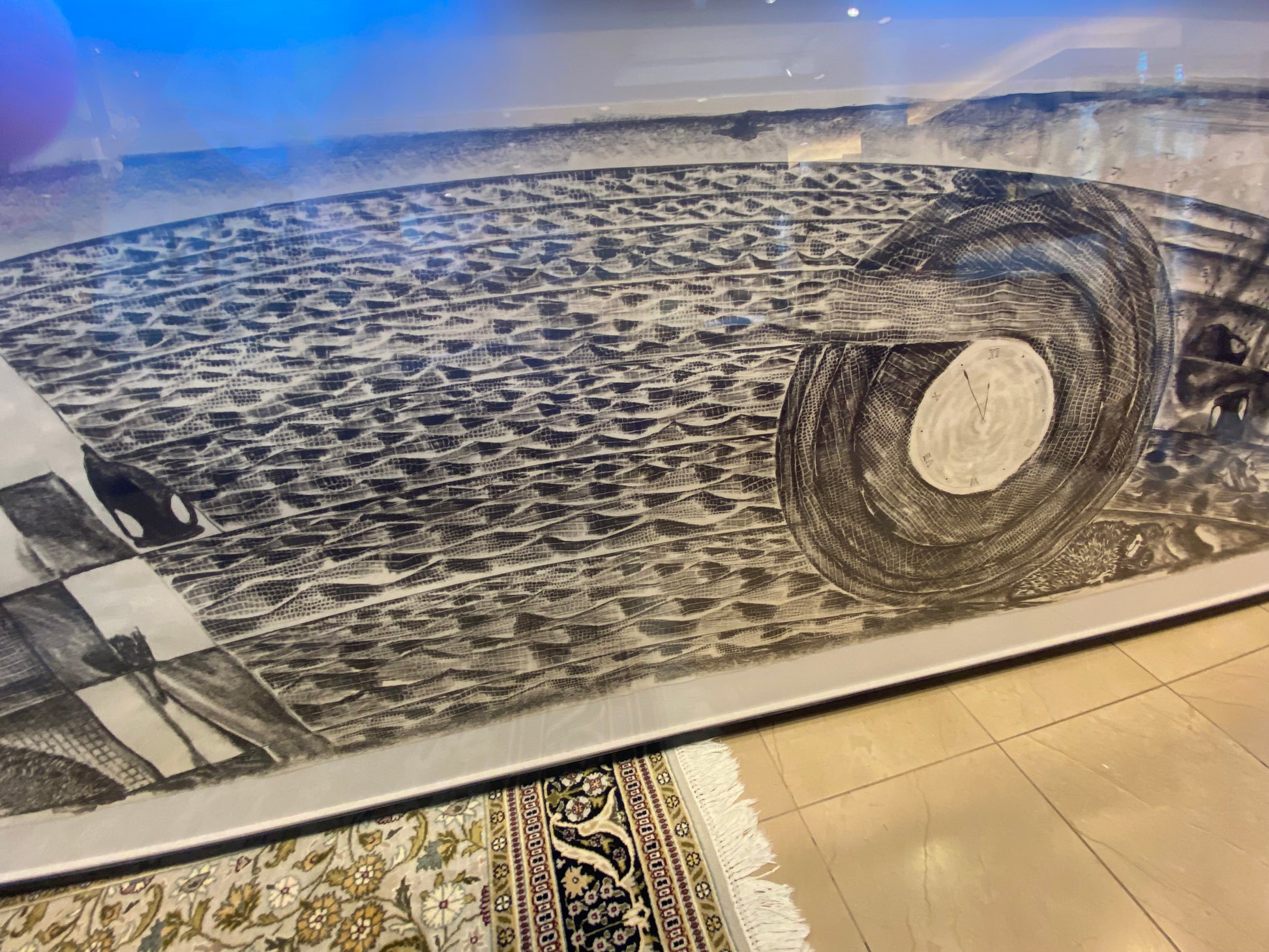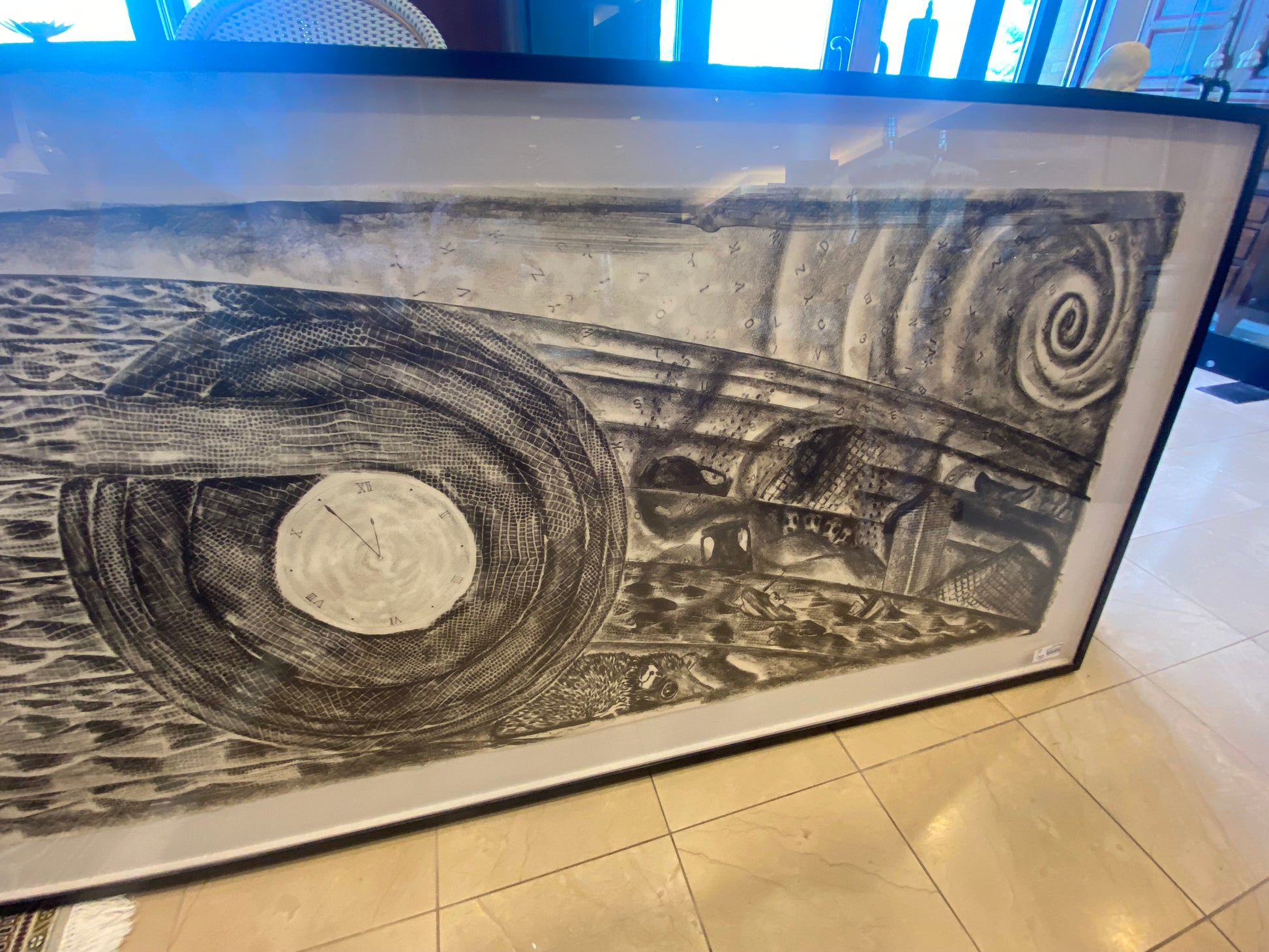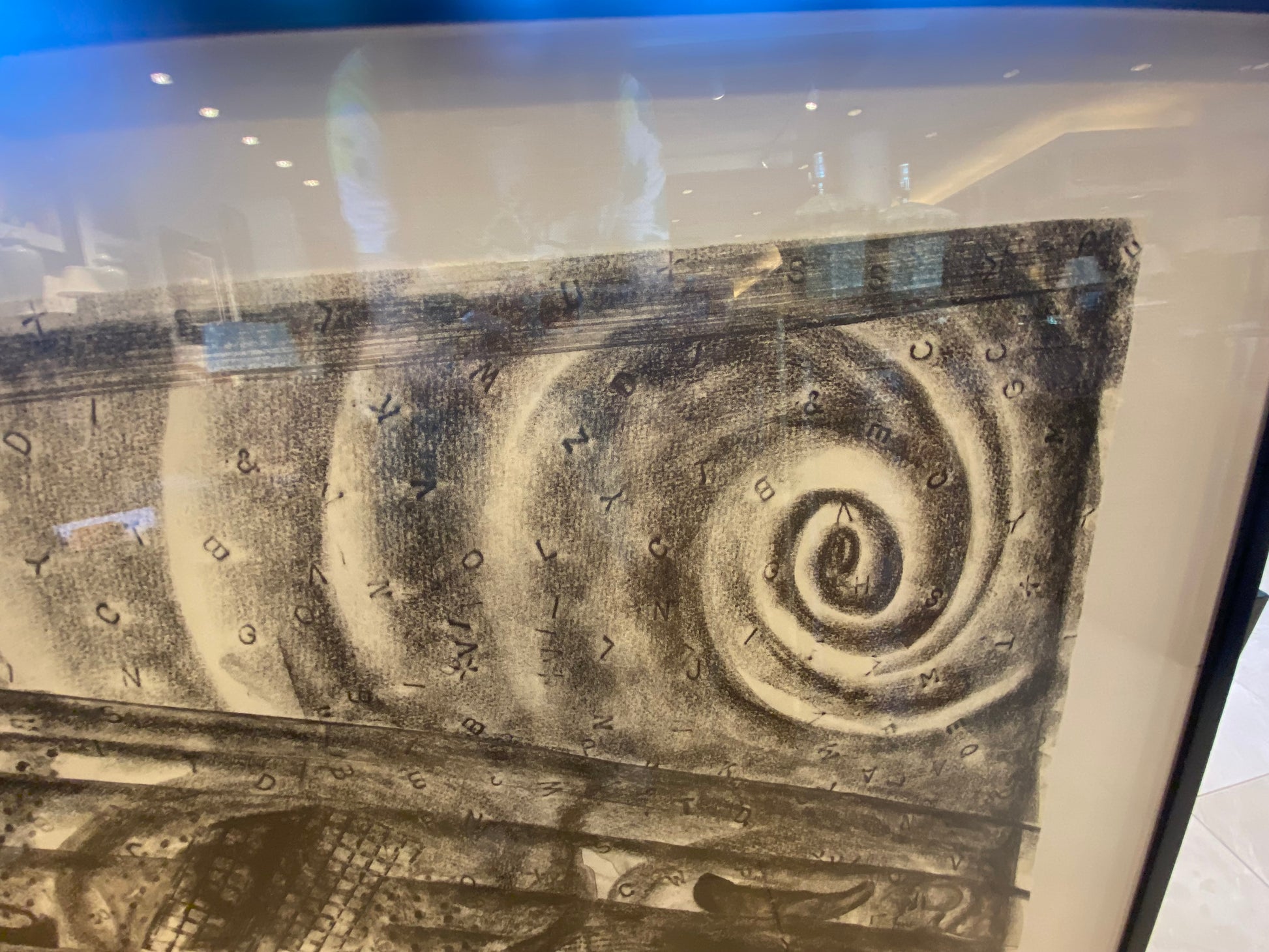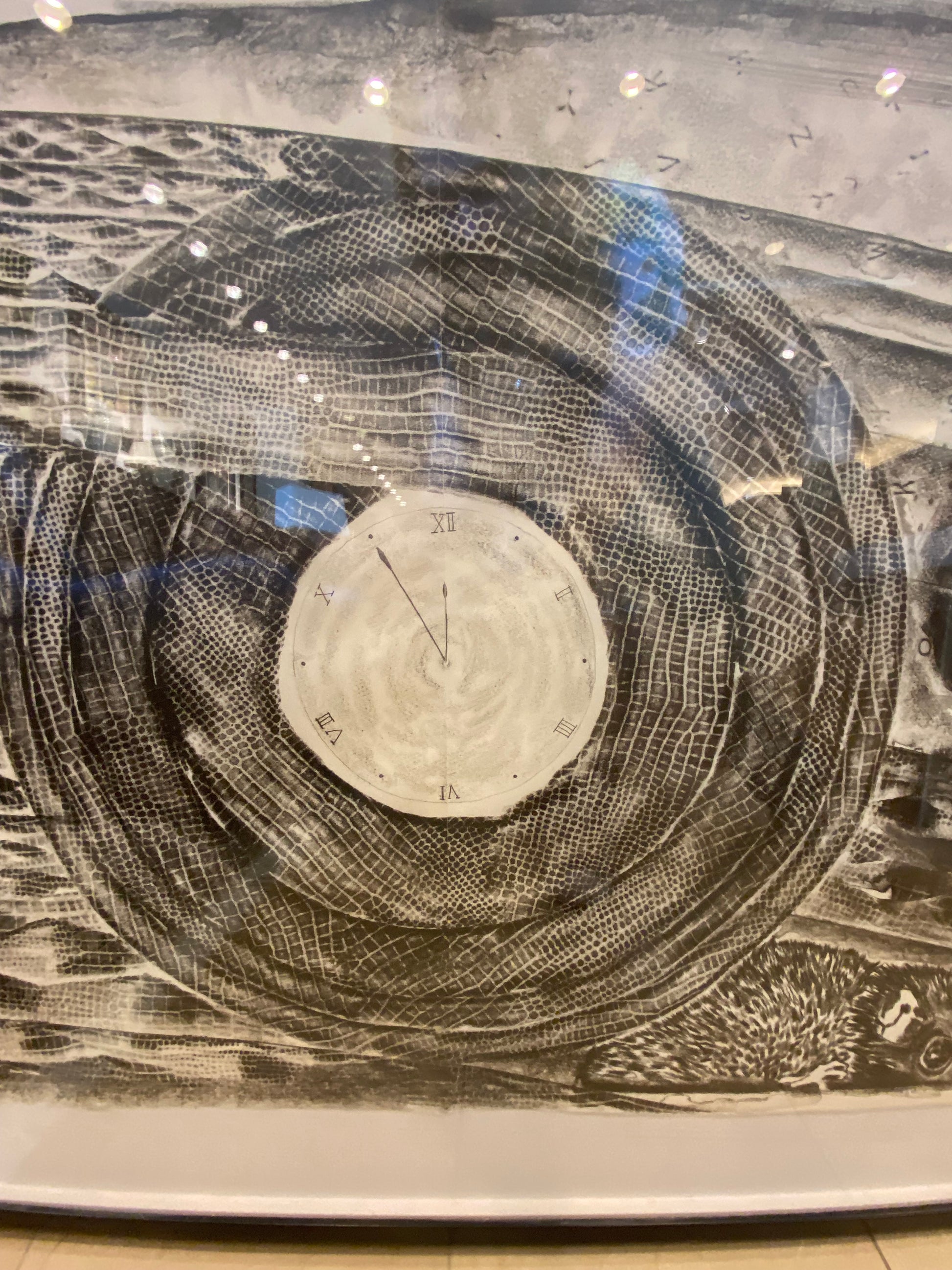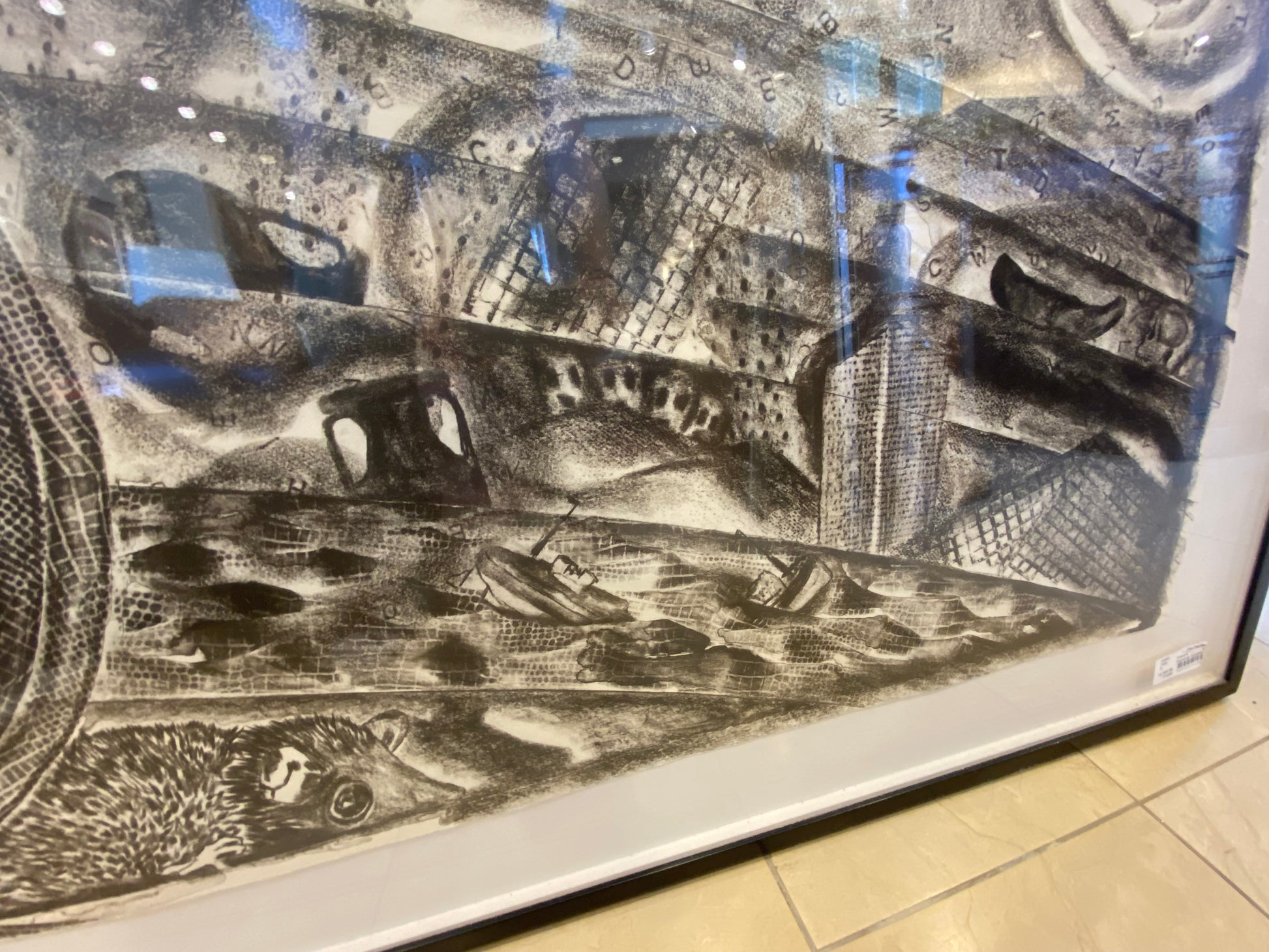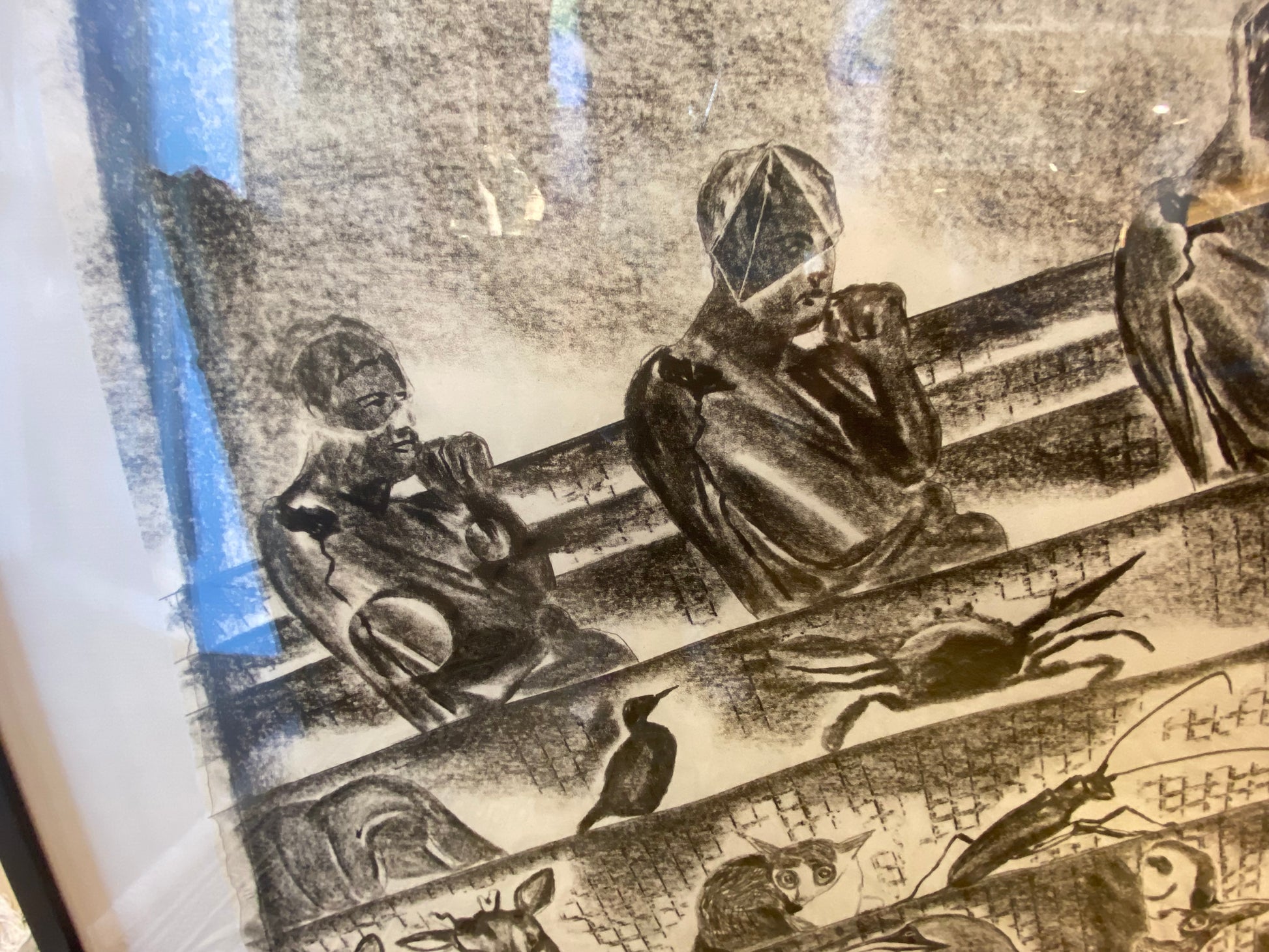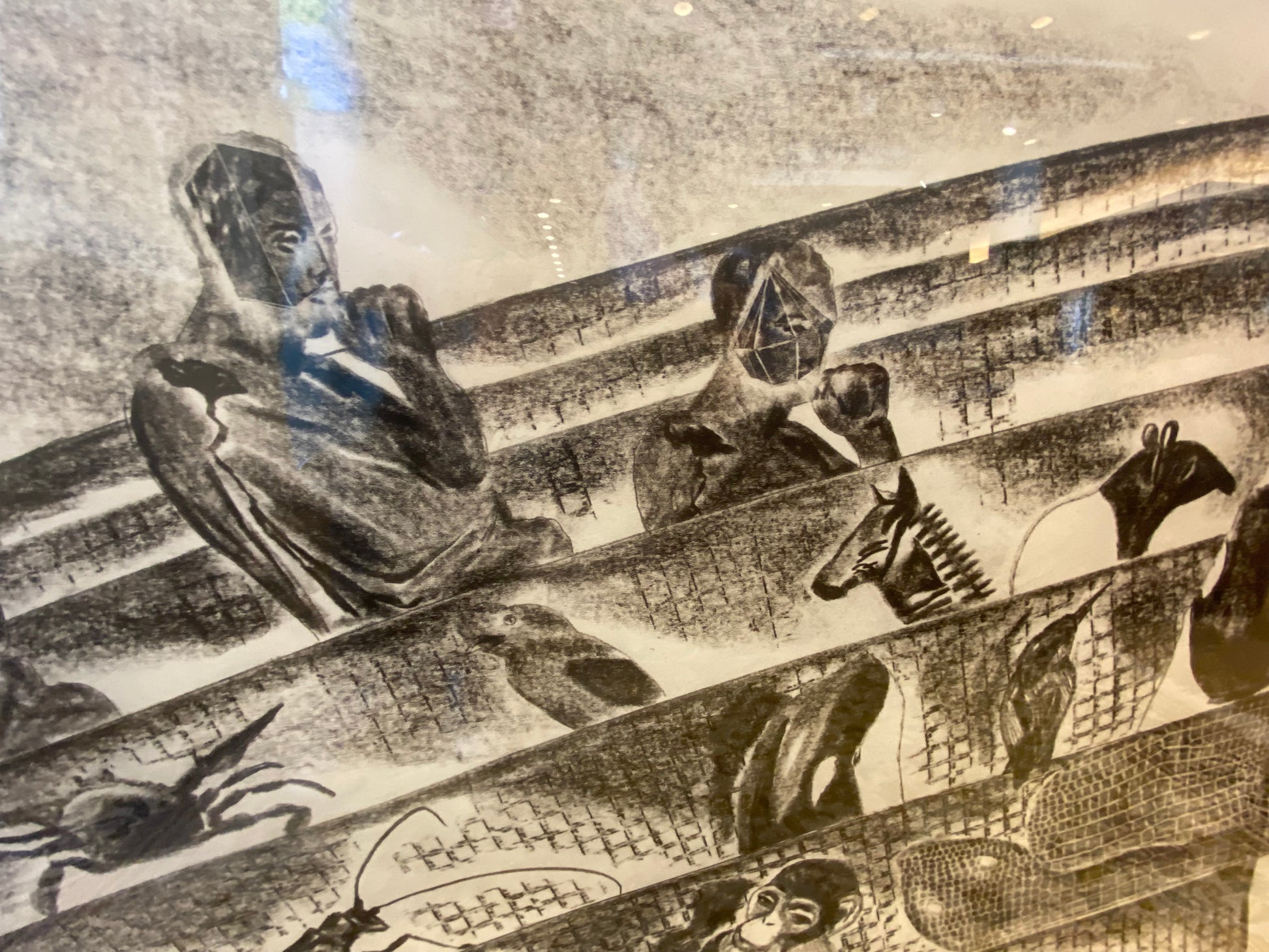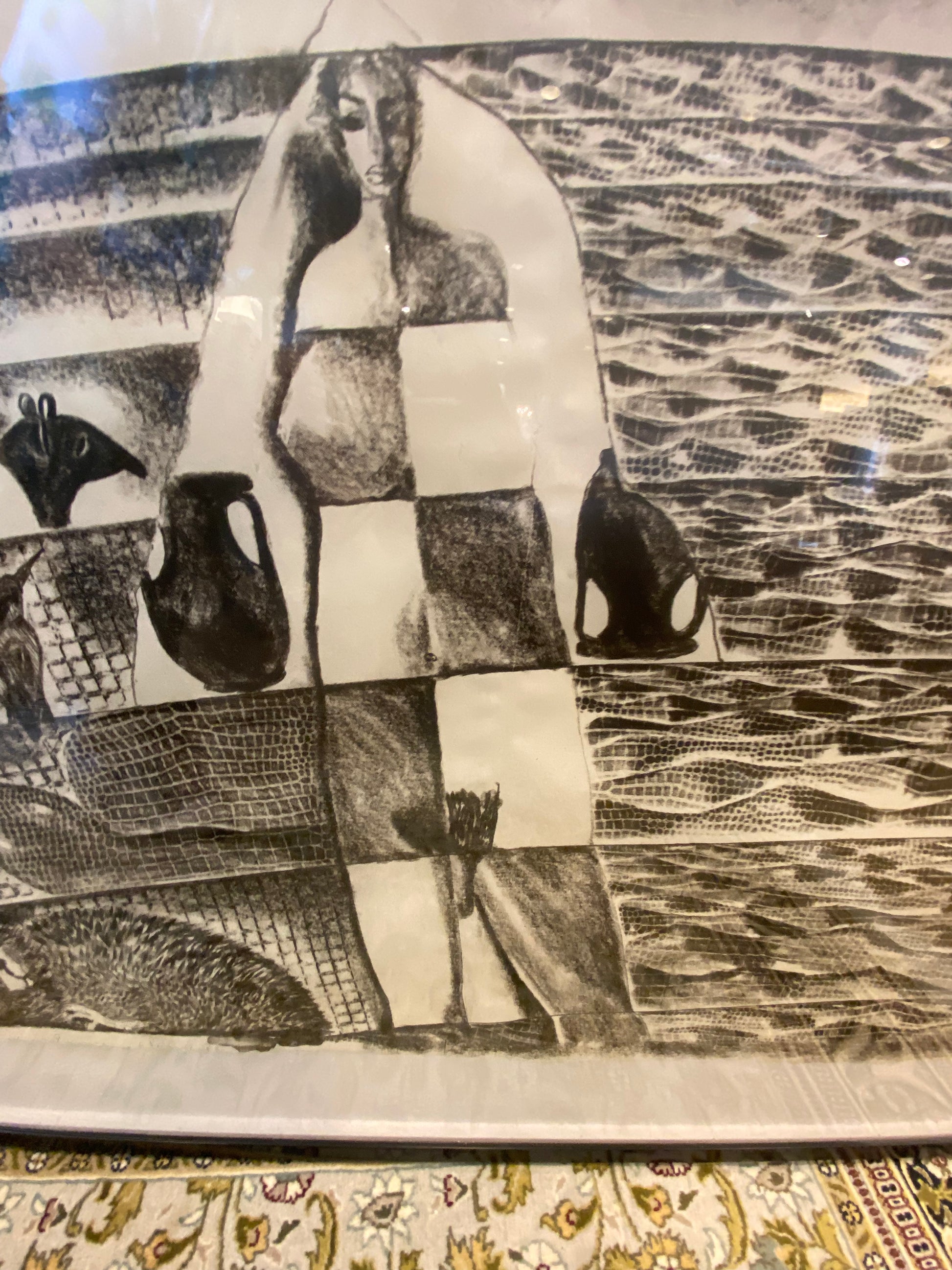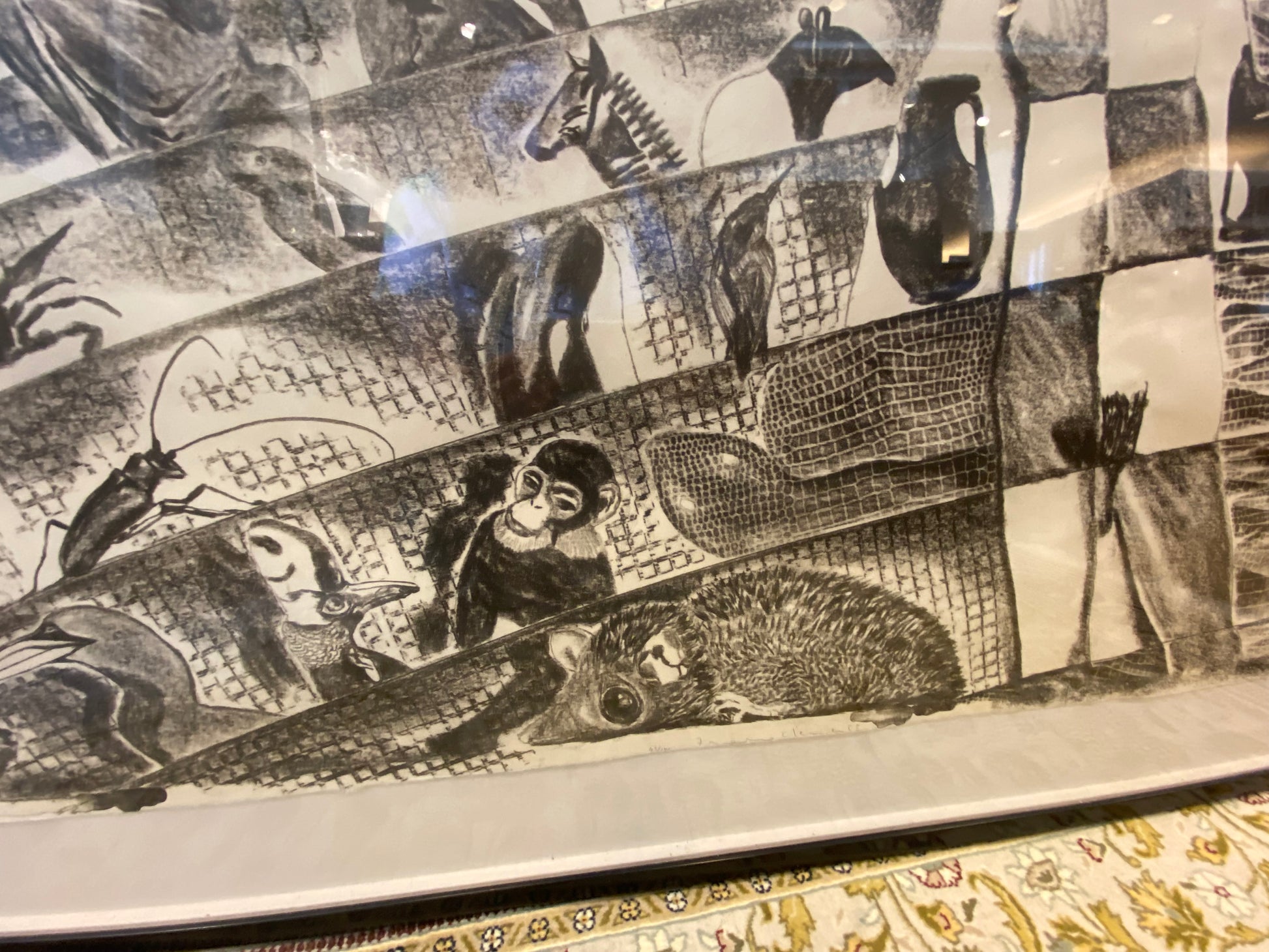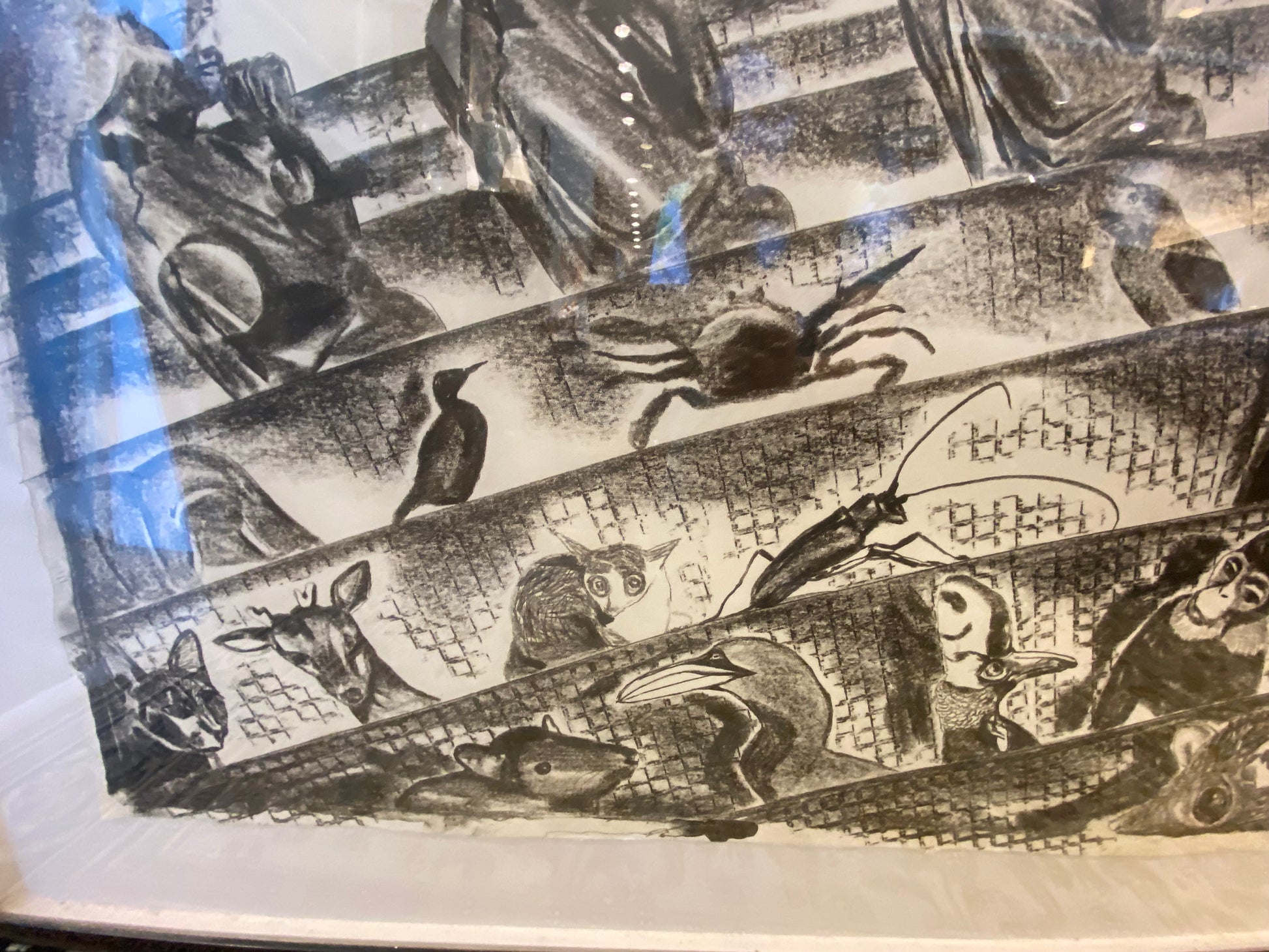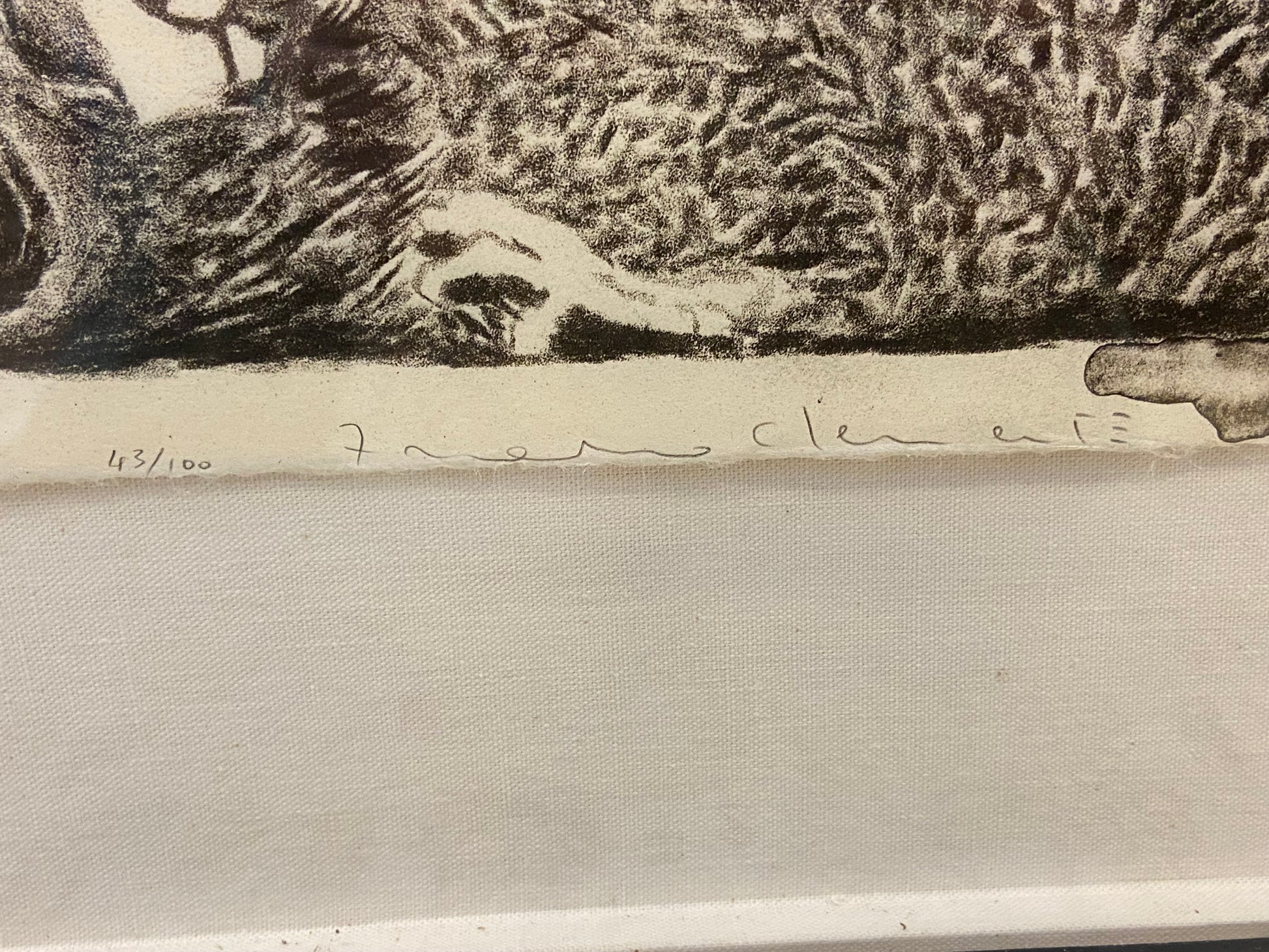The Perfect Thing
Francesco Clemente Untitled A, 1986
Francesco Clemente Untitled A, 1986
Regular price
$4,300.00 USD
Regular price
Sale price
$4,300.00 USD
Unit price
per
Shipping calculated at checkout.
Couldn't load pickup availability
Francesco Clemente is a contemporary Italian artist known for his dreamlike paintings based on esoteric themes of sexuality and spirituality. Working across oil painting, installation, and watercolor, Clemente’s works are characterized by their formal experimentation with symbols, portraiture, and the human figure. Clemente continues to live and work in New York. This work was printed from the plates of Francesco Clemente’s mythological landscape Untitled A on the occasion of the 1986 MoMA, New York show of Clemente’s The Departure of the Argonaut. Signed in bottom left: 43/100 Francesco Clemente Measurements: With frame: 126 x 35 Without frame: 118 x 27 This item is located at The Perfect Thing (161 Town Square, Wheaton, IL 60189). Shipping available for a fee. Contact Kate@theperfectthing.net for a quote. All items are previously owned and used, please see pictures for details. Pictures are provided to the best of ability. Factors like resolution, lighting, and coloration may affect detail perception.
